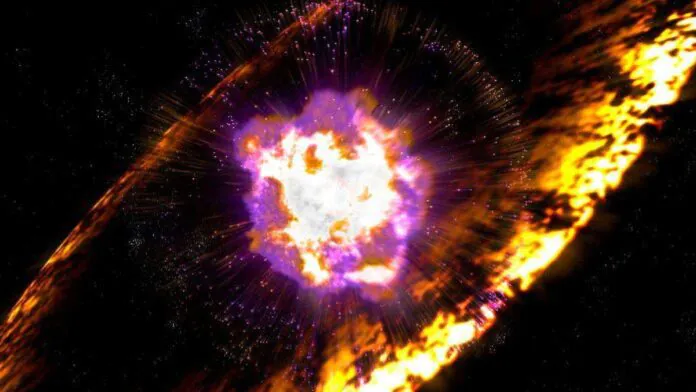© ROOT-NATION.com - Use of content is permitted with a backlink.
In 1996, the strangest stone was discovered in Egypt, named “Hypatia”, in honor of the ancient mathematician. It contains mineral compounds that have not previously been found in any of the celestial bodies – the interstellar material of the stone is older than the solar system. The chemical composition of the stone suggests that it contains dust and gas, which once surrounded a huge type of supernova.

Type Ia supernovas typically occur within dust clouds, where a white dwarf or shell of a collapsing star shares an orbit with a larger and younger star that still has fuel for reactions. The smaller and denser white dwarf uses its immense gravitational pull to snatch some of the younger star’s fuel, which it gorges on relentlessly, stretching the younger star into a teardrop shape. However, the act of cosmic cannibalism eventually ends in mutual annihilation, as the white vampire dwarf becomes large enough to resume nuclear reactions in its nucleus. After a sudden bright flash, a huge supernova explosion throws the irradiated contents of both stars out to mix and merge with the dust.

In the case of the Hypatia Stone, a cocktail of dust and gas probably drifted in space for billions of years before arriving in our cosmic backyard, eventually freezing in the parent body of the stone somewhere at the birth of our solar system. Formed, apparently, in the outer part of the solar system, the stone eventually fell to Earth, crashing into debris on landing.
To find out where the stone came from, the researchers conducted a chemical analysis of a tiny specimen using non-destructive methods. They showed that the rock had an extremely low content of silicon, chromium, and manganese – elements that are rare in the interior of the solar system, as well as an abnormally high content of iron, sulfur, phosphorus, copper, and vanadium for neighboring objects. An exhaustive search for stellar data and simulations left the team with no other plausible explanation for the origin of the stone than the supernova type Ia, which could explain the unusual concentrations of elements in the stone. The ratios of 8 of the 15 elements analyzed by the researchers (silicon, sulfur, calcium, titanium, vanadium, chromium, manganese, and nickel) are very close to the concentrations predicted for the white dwarf explosion.
“If this hypothesis is correct, the Hypatia stone would be the first tangible evidence on Earth of a supernova type Ia explosion,” scientists said.
You can also help Ukraine fight with Russian occupants via Savelife or via an official page of the National Bank of Ukraine.
Read also:
- A new look galaxy rotation saves the controversial gravity theory
- Hubble and the expansion of the universe: 30 years of the space telescope


